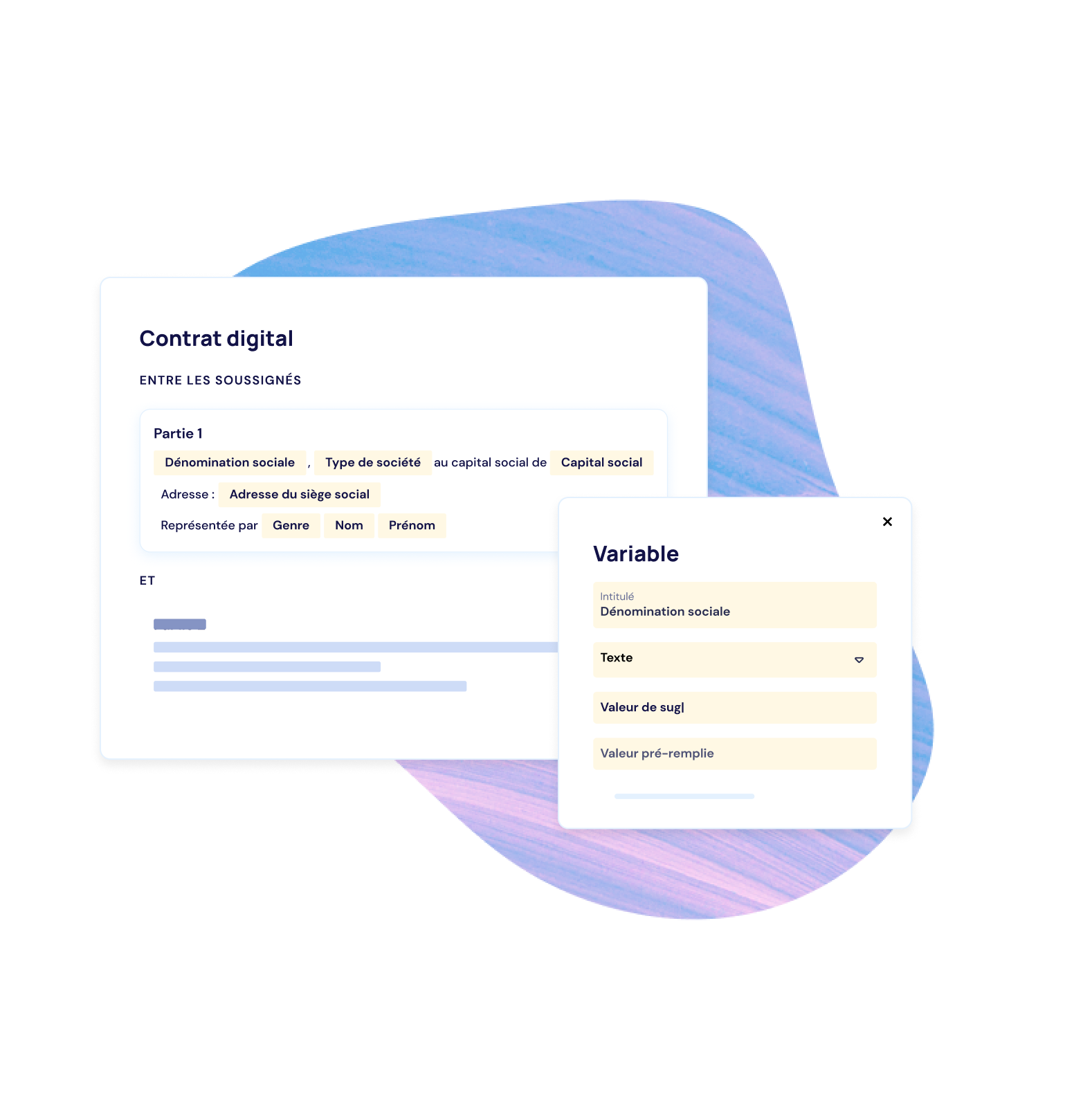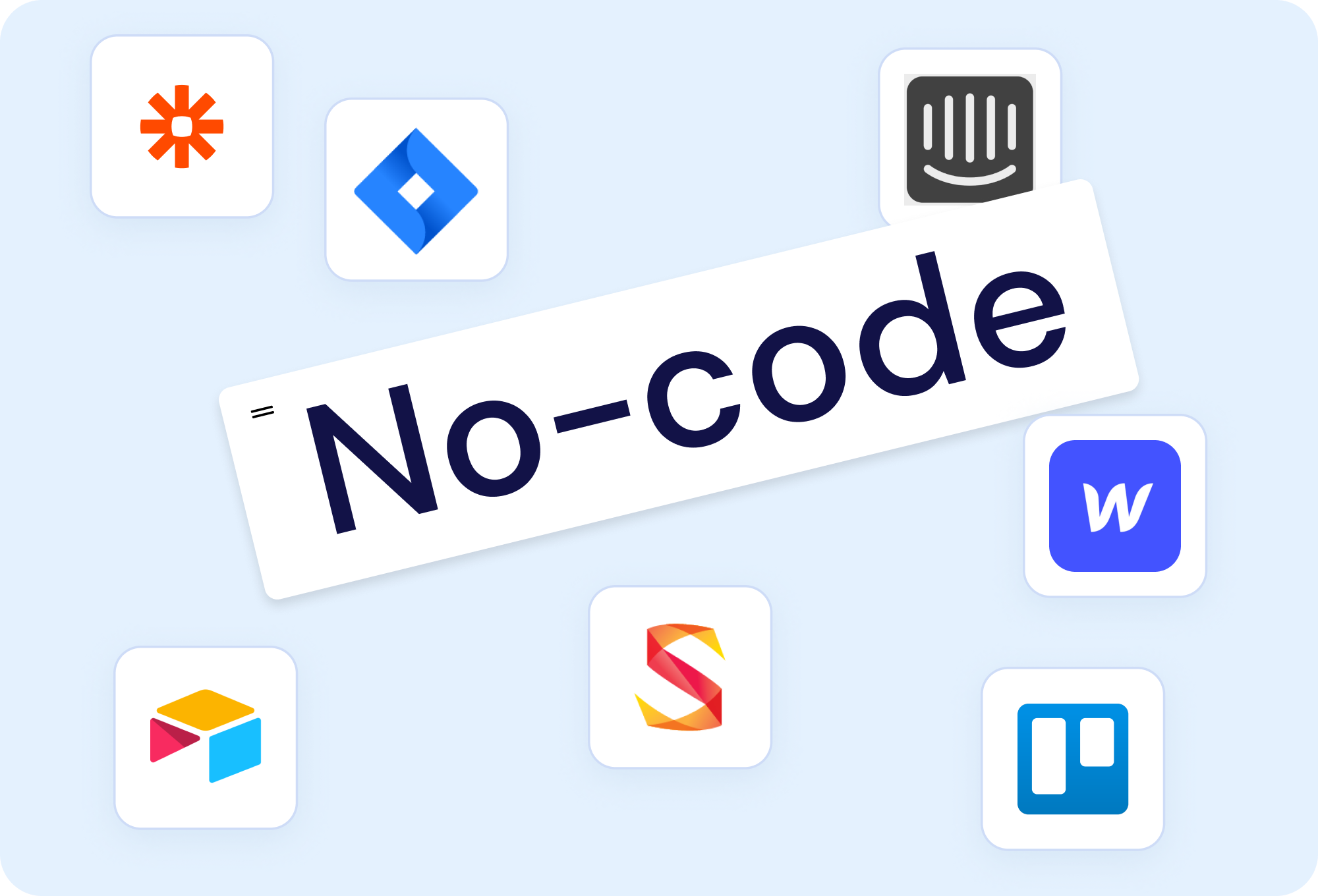If no-code is on the rise and has been democratized in the tech world, it still suffers from a lack of awareness in other sectors.
Used methodically, the no-code is however and without any hesitation one of the most useful and promising advances in computer science.
More than a trendy tech movement, no-code is a philosophy that considers that technology should be accessible to all.
Indeed, no-code tools allow to simplify and make accessible the development of websites, applications and video games. It is now possible to develop a project without using a single line of code or almost.
But what is no-code? What is the history of the no-code movement? What kind of needs does it answer? You're in luck: we explain it all to you!
What is the no code?
You don't need to know how to code and be a developer to create a website or an application with no-code. Many entrepreneurs and developers have taken advantage of these tools. No-code allows you to create web apps or software applications without any knowledge in computer programming.
It is also the ability to automate certain actions, certain workflows without writing a single line of code.
According to Vlad Magdalin, founder of Webflow, a major player in no-code in website creation, "No Code allows people who don't know how to write code to develop the same applications as a software engineer".
The no-code is based on the use of a system of blocks that can be easily configured and that allow :
- workflow automation: triggering actions based on the occurrence of events
- to link third-party applications together
- automate processes or actions through the use of easy-to-use components
Here are some examples of concrete uses:
- Automatically send an email when a contact form is completed
- Automatically generate a payslip following validation of the amounts making up the wage bill
- Automate the creation of a contract from a form
- Create a website

| Term | Definition |
|---|---|
| no-code app | In French, application no code. It is an application that allows the development of an app without technical skills. The "no-code app" is the means and not the result. |
| no-code platform | Synonym for no-code app or no-code application. |
| no-code movement | Refers to the movement that led to the rise and development of no code |
| no-code concept | Notion is one of the most renowned players among all no-code applications on the market. It is one of the applications whose use is simplified by no-code interfaces. |
| saas no-code | No-code saas refers to the term software as a service. It is software installed on the publisher's servers rather than on the end user's machine. |
What was the genesis of no-code?
If we take the use case of the creation of a Windows or Apple iOS file, we understand that the beginnings of no code are not so recent...
No need to look in your history books, there is no precise starting point (date, event, etc...) when we talk about the history of the no-code movement. On the other hand, this movement came from a movement of developers who wanted to develop so-called Graphical User Interfaces (GUI). GUIs have allowed us to use computers and software more simply. The first GUIs appeared in the 1970s. The no-code movement aims to simplify the creation of digital products by creating a GUI for websites, mobile applications, chatbots, video games.
Here are the chronological stages of the development of this movement:
- Windows, iOS: the first electronic computers are born
- The launch of Excel by Microsoft in 1985
- WordPress revolutionizes website creation by enabling website creation in 2003
- Shopify allows you to create your e-commerce without a line of code in 2004
- The Rise of No Code: 2010s to present
- Lots of demand, not enough developers
- APIs for platforms
- Facilitating entrepreneurship in an entrepreneurial society
What are the advantages and disadvantages of no-code?
The development of the no-code movement responds to the lack of developers on the market by making the creation of digital products accessible to all. Adopting no-code tools saves a lot of time and money.
Indeed, developers gain in productivity because they can rely on the functionalities of no-code platforms to go faster and focus on more technical tasks. No-code tools are very easy to use as you just have to drag and drop already defined modules to use the interface. Although the possibilities of no-code tools are very wide, the limits of no-code exist.
By using no-code tools, you do not own your source code, you are fully dependent on the platforms.
What is the difference between no-code and low code?
When researching the notion of no-code, the term low code is often associated with it.
Is it a synonym referring to the same term, is there a nuance between the two? Are these two notions related? Here are the definitions of these two concepts that will help you to see more clearly.
- Low-code: in French, "peu de code" or "little programming", refers to the development of applications based on graphical interfaces but requiring a minimum of programming knowledge. Low-code is intended for a public of developers or an audience aware of computer development to facilitate the creation of software.
- The no-code: in French, "pas de code", refers to the development of applications without any technical skills. The no-code is, by definition, intended for any type of public.
The two notions are linked in the sense that you can use a no-code tool to realize 90% of your project and then use a low-code tool to integrate other functionalities like an API.
| Code number | Low-code | |
|---|---|---|
| Public | General public | Computer developers |
| Code share | 0% | about 20%. |
| Objective | Enable anyone to create applications, automate processes without a line of code | Make it easier for software developers to create software by reducing the amount of code |
What types of needs does no-code meet?
It may be hard to believe, but no-code can meet any type of need: the main thing is to determine your objective, the result you want to achieve!
At Seraphin.legal for example, we use this type of tool for a whole range of processes that we wanted to automate:
- Accounting
- HR management
- Contractualisation (obviously 😉 )
- Sales and marketing
- etc...
No code: what are the most popular platforms?
There are many no-code tools available. You just have to choose the ones that are the most adapted to your activity.
After mentioning some of the historical players in our timeline, here are some of the players who are currently active in this field:
Create web applications
Bubble: It is a software that allows you to create mobile applications without code using a drag and drop editor. Once you create the application using the interface, Bubble takes care of launching and hosting the application for you.
Glide: With this no-code tool, you can create an application from a simple spreadsheet. With Glide, the spreadsheet is rethought as a coding machine.
Develop websites
Webflow: With Webflow, the focus is on design and ease of use. This no-code tool is especially appealing to designers and web design projects where design is important.
Carrd: With Carrd, you can create a one page site quickly and without a single line of code.
Manage databases
Airtable : Airtable is an easy-to-use low-code platform for creating and sharing databases.
Increase productivity
Notion: Notion is the application to adopt for managing your tasks and creating your workspaces.
Automate your processes
Zapier : Zapier is an automation tool that allows you to connect your different web applications and automate your repetitive tasks.
Make: An alternative to Zapier, Make is an automation tool that allows you to link all your software together.
Would you like to know more about the benefits of no-code on your contracts? Read our article on no-code in contract management.
Choose to combine contractual performance and legal certainty
No commitment, no credit card.



